The Pacific Crest Trail Gear Guide: Class of 2019 Survey
Check out the most recent PCT Gear Guide here.
In the second chapter of the Pacific Crest Trail Thru-hiker Survey, we examine hikers’ gear. PCT gear lists can vary widely between hikers, and (spoiler alert) it’s impossible to find a perfect one. That said, we can try.
I’ve organized this post in a way that I hope will give a comprehensive picture of what gear PCT thru-hikers are using. This post covers the highest-rated gear, most common gear, gear statistics based on different groups of hikers, the lowest-rated gear, hiker comments on gear, and finally, gear advice. The gear covered here includes backpacks, shelters, sleeping bags, sleeping pads, down jackets, rain jackets, bear canisters, stoves, water treatment, and snow equipment.
Previously, I also included women-specific gear, but in the interest of both organization and getting this post published (and to keep this post from being absurdly long), I am going to be publishing follow-up posts on gear broken down by gender as well as gear used by couples hiking the PCT.
I am sure that some of you will come up with comparisons you would like to see that I have overlooked. My hope is to make this a useful resource for PCT hikers, so if there’s anything that you think is missing, please leave a comment or get in touch.
That being said, I hope you enjoy this year’s PCT Gear Guide brought to you by the PCT Class of 2019.
Jump to a section

Notes on the data
- This year we had 846 completed surveys – that’s a 68% increase vs. last year and the most respondents in the history of the survey.
- Some responses have been sorted and colored to present the data in a friendlier manner (e.g. northbound vs. southbound responses).
- Not all PCT hikers meticulously document the stats of their thru-hike (yes, I’m weird). Therefore, the data is not going to be 100% accurate. That said, it should be fairly close to the reality of the trail this year.
- I refer to survey respondents collectively as this year’s “class“. Remember, this is a sample and not a comprehensive survey of every single PCT hiker on the trail this year.
- If you find a small and meaningless discrepancy in the data, congratulations. However, if you find a large or obvious error, please let me know and it will be corrected.
- If you’re wondering what this symbol – σ – is, it’s the symbol for standard deviation. If you don’t know what that is, I invite you to use the Google.
- If two pieces of gear have the same rating, the higher ranking is given to the piece of gear that had a higher number of users.
- For stats requiring the length of the PCT for a calculation (e.g. average mileage per day over the course of the trail), I use 2,660 mi / 4,280 km.
- I will be releasing more detailed survey posts focused on PCT Resupply, PCT Demographics, PCT Horror Stories, and PCT Advice in the coming weeks. If you would like to be notified of new surveys, click here.
LABELS differentiating hiker segments:
- THRU: Thru-hikers (all)
- THRU-0: Thru-hikers who did NOT complete the PCT
- THRU-1: Thru-hikers who completed the entire PCT
- NOBO: Northbound thru-hikers (all)
- NOBO-0: Northbound thru-hikers who did NOT complete the PCT
- NOBO-1: Northbound thru-hikers who completed the PCT
- SOBO: Southbound thru-hikers (all)
- SOBO-0: Southbound thru-hikers who did NOT complete the PCT
- SOBO-1: Southbound thru-hikers who completed the PCT
If NO LABEL has been appended to a data point, then I used all data collected (i.e. it also includes section hiker data).
The Highest-rated PCT Gear
In addition to asking each PCT hiker what gear they used, I also ask hikers to rate each piece of gear. No point in doing what everyone else is doing if they’re all doing it wrong, right? I use this information to arrive at a top-five-pieces-of-gear list for each of the categories surveyed.
NOTES ON THE DATA:
- All weights (and for backpacks, capacity) for products below are for products in a size medium and/or regular unless otherwise noted. For ice axes, I used whichever available length was closest to 60 cm.
- I only included items here that were used by AT LEAST twenty hikers. Why twenty? Because that’s the number I arbitrarily decided on – I already told you, this isn’t scientific. That said, most of the items listed here had closer to 50 hikers who used them.
The Highest-rated PCT Gear List
So what does our “Highest-rated PCT gear List” backpack have in it? And, on that note, what is our backpack?
- Backpack: ULA Circuit
- Shelter: MSR Hubba NX
- Sleeping bag: Western Mountaineering Versalite
- Sleeping pad: Therm-a-Rest NeoAir XTherm
- Insulated jacket: Rab Microlight Alpine Down Jacket
- Shell: Arc’teryx Beta SL Hybrid Jacket
- Stove: SOTO WindMaster
- Water treatment: Sawyer Squeeze
- Trekking poles: Black Diamond Trail Ergo Cork
- Ice axe: Black Diamond Raven Pro
- Traction device: Snowline Light Chainsen Crampon
- Bear canister: Bearikade Weekender
- Shoes: HOKA ONE ONE Speedgoat
Total weight – Big 3 (pack, shelter, sleeping bag): 7 lbs 7 oz / 3.374 kg
Total weight – Big 4 (Big 3 + sleeping pad): 8 lbs 6 oz / 3.799 kg
All PCT gear (outside Sierra*): 10 lbs 6.7 oz / 4.726 kg
All PCT gear: 13 lbs 12.06 oz / 6.239 kg
*The Sierra includes ice axe, traction device, and bear canister.
These base weights are missing gear (headlamp, extra clothing, electronics, etc.), and they get us within striking distance of the AVERAGE STARTING BASE WEIGHT (total weight not including consumables such as food, water, and poop paper) of this year’s thru-hikers: 18.12 lbs / 8.219 kg. Also, note that the stove included in this list, the SOTO WindMaster, does not include the weight of a pot.
The total price of all this gear? $2,968 (this includes one pair of shoes). The average amount hikers spent prior to beginning their hikes? $1,529.74 (σ = $977.01). Clearly, most hikers had some of their gear prior to beginning their hikes.
Now, let’s take a detailed look at the top five highest-rated pieces of gear in each of the following categories: backpacks, shelters, sleeping bags, sleeping pads, insulated jackets, shells, stoves, water treatments, trekking poles, ice axes, traction devices, bear canisters, and shoes.
HIGHEST-RATED PCT BACKPACKS
The ULA Circuit was the highest-rated pack on the PCT this year. It is a 41 oz / 1.162 kg pack capable of carrying up to 68 L and 35 lbs / 16 kg. It’s largely customizable and you can even have your name embroidered on yours for an extra $15.
| BACKPACK | PRICE | RATING | WEIGHT | LITERS | MAX LOAD | ACCESS |
|---|---|---|---|---|---|---|
| ULA Circuit | $255 | 4.60/5 | 41 oz / 1.162 kg | 68 | 35 lbs / 16 kg | Top |
| ULA Catalyst | $280 | 4.55/5 | 48 oz / 1.361 kg | 75 | 40 lbs / 18 kg | Top |
| Hyperlite Mountain Gear Windrider | $345 | 4.50/5 | 31.82 oz / 902 g | 55 | 40 lbs / 18 kg | Top |
| Osprey Eja | $220 | 4.40/5 | 41 oz / 1.162 kg | 58 | 40 lbs / 18 kg | Top |
| Hyperlite Mountain Gear Southwest | $345 | 4.32/5 | 32.11 oz / 910 g | 55 | 40 lbs / 18 kg | Top |
HIGHEST-RATED PCT SHELTERS
The MSR Hubba NX was the highest-rated shelter on the PCT this year. It’s a one-person, free-standing shelter weighing in at 46 oz / 1.304 kg. It has a single, side-entry door and has a minimum trail weight of 39 oz / 1.106 kg.
| SHELTER | PRICE | RATING | WEIGHT | PACKED SIZE | HEIGHT | FLOOR | DOORS |
|---|---|---|---|---|---|---|---|
| MSR Hubba NX | $380 | 4.74/5 | 46 oz / 1.304 kg | 6 x 18 in / 15 x 46 cm | 36 in / 91 cm | 18 ft² / 1.67 m² | 1 |
| Big Agnes Copper Spur HV UL3 | $500 | 4.68/5 | 62 oz / 1.757 kg | 6 x 21 in / 15 x 53 cm | 43 in / 109 cm | 41 ft² / 3.81 m² | 2 |
| Big Agnes Tiger Wall UL2 | $400 | 4.64/5 | 40 oz / 1.133 kg | 5.5 x 18 in / 14 x 46 cm | 39 in / 99 cm | 28 ft² / 2.6 m² | 2 |
| Big Agnes Copper Spur HV UL2 | $450 | 4.61/5 | 50 oz / 1.417 kg | 6 x 19.5 in / 15 x 50 cm | 40 in / 101 cm | 29 ft² / 2.69 m² | 2 |
| MSR Hubba Hubba NX | $450 | 4.56/5 | 62 oz / 1.757 kg | 6 x 18 in / 15 x 46 cm | 39 in / 99 cm | 29 ft² / 2.69 m² | 2 |
A NOTE ON SHELTERS
For the weight of each shelter, I have used the packed weight – that is, the weight of the shelter including stuff sacks, guy lines, and stakes.
HIGHEST-RATED PCT SLEEPING BAGS
The Western Mountaineering Versalite was the highest-rated sleeping bag on the PCT this year. The top three highest-rated sleeping bags this year were all Western Mountaineering bags. The Versalite uses 850-fill down insulation and has interlocking draft tubes with a down-filled collar.
| SLEEPING BAG | PRICE | RATING | WEIGHT | TEMPERATURE | FILL | FILL WEIGHT |
|---|---|---|---|---|---|---|
| Western Mountaineering Versalite | $605 | 4.94/5 | 32 oz / 907 g | 10°F / -12°C | 850-fill goose down | 20 oz / 565 g |
| Western Mountaineering UltraLite | $525 | 4.87/5 | 30 oz / 850 g | 20°F / -6°C | 850-fill goose down | 16 oz / 453.6 g |
| Western Mountaineering Alpinlite | $585 | 4.85/5 | 31 oz / 879 g | 20°F / -6°C | 850-fill goose down | 19 oz / 539 g |
| Enlightened Equipment Revelation 10 | $325 | 4.53/5 | 25.95 oz / 736 g | 10°F / -12°C | 850-fill duck down | 13.63 oz / 386 g |
| REI Co-op Magma 15 | $370 | 4.44/5 | 28.2 oz / 800 g | 16°F / -8.9°C | 850-fill goose down | 15.9 oz / 451 g |
HIGHEST-RATED PCT SLEEPING PADS
The Therm-a-Rest NeoAir XTherm sleeping pad was the highest-rated sleeping pad of PCT hikers this year. The 2.5 in / 6.4 cm thick pad comes in either regular or large sizes (there’s no small because this is a four-season pad), and it has an R-value of 6.9.
| SLEEPING PAD | PRICE | RATING | WEIGHT | R-VALUE | TYPE | PACKED SIZE | THICKNESS |
|---|---|---|---|---|---|---|---|
| Therm-a-Rest NeoAir XTherm | $215 | 4.82/5 | 15 oz / 425 g | 6.9 | Air | 9 x 4 in / 23 x 10 cm | 2.5 in / 6.4 cm |
| Therm-a-Rest NeoAir XLite | $185 | 4.402/5 | 12 oz / 340 g | 4.2 | Air | 9 x 4.1 in / 23 x 10 cm | 2.5 in / 6.4 cm |
| Therm-a-Rest Z Lite Sol | $45 | 4.400/5 | 14 oz / 397 g | 2.6 | Foam | 20 x 5 x 5.5 in / 51 x 13 x 14 cm | 0.75 in / 2 cm |
| Therm-a-Rest NeoAir XLite (Small) | $145 | 4.33/5 | 8 oz / 227 g | 4.2 | Air | 9 x 3.5 in / 23 x 9 cm | 2.5 in / 6.4 cm |
| NEMO Tensor Insulated | $160 | 4.25/5 | 15 oz / 425 g | 3.5 | Air | 8 x 3 in / 20 x 8 cm | 3 in / 7.6 cm |
HIGHEST-RATED PCT INSULATED JACKETS
The Rab Microlight Alpine Down Jacket was the highest-rated jacket among PCT hikers this year. The jacket uses 750-fill-power, RDS-certified (Responsible Down Standard) European goose down with a hip-length back and a nylon shell. It has two hand-warmer pockets and a single zippered chest pocket.
| JACKET | PRICE | RATING | WEIGHT | INSULATION | HOOD | POCKETS |
|---|---|---|---|---|---|---|
| Rab Microlight Alpine Down Jacket | $215 | 4.93/5 | 15.1 oz / 428 g | 750-fill goose down | Yes | 2 zippered hand / 1 zippered chest |
| Enlightened Equipment Torrid APEX Jacket | $170 | 4.88/5 | 8.4 oz / 238 g | Climashield APEX | Yes | 2 zippered hand |
| Arc’teryx Cerium SL Down Jacket | $330 | 4.79/5 | 6.9 oz / 196 g | 850-fill goose down | No | 2 zippered hand |
| Arc’teryx Cerium LT Down Hoodie | $380 | 4.75/5 | 10.9 oz / 309 g | 850-fill goose down | Yes | 2 zippered hand / 1 zippered internal |
| Feathered Friends Eos Down Jacket | $340 | 4.73/5 | 10.6 oz / 300 g | 900+ fill goose down | Yes | 2 zippered hand |
HIGHEST-RATED PCT SHELLS
The Arc’teryx Beta SL Hybrid Jacket was the highest-rated shell (that’s a fancy name for rain jacket) among PCT hikers this year. It’s a 12.3 oz / 349 g jacket made with Gore-Tex Paclite that includes pit zips and two zippered hand pockets. Men’s / Women’s
| SHELL | PRICE | RATING | WEIGHT | FABRIC | PIT ZIPS | POCKETS |
|---|---|---|---|---|---|---|
| Arc’teryx Beta SL Hybrid Jacket | $400 | 4.41/5 | 12.3 oz / 349 g | Gore-Tex Paclite | Yes | 2 zippered hand |
| Marmot Minimalist | $190 | 4.29/5 | 14.9 oz / 422 g | Gore-Tex Paclite | Yes | 2 zippered hand / 1 zippered chest |
| Montbell Versalite | $200 | 4.15/5 | 6.4 oz / 182 g | Gore-Tex Infinium Windstopper | Yes | 2 zippered hand |
| Marmot PreCip Jacket | $100 | 4.09/5 | 11.39oz / 322.9g | Marmot NanoPro Waterproof/Breathable | Yes | 2 zippered hand |
| Patagonia Torrentshell | $130 | 4.07/5 | 12.1 oz / 343 g | 2.5-layer H2No Performance Standard shell | Yes | 2 zippered hand |
HIGHEST-RATED PCT STOVES
The SOTO WindMaster was the highest-rated stove on the PCT this year. It’s a 2.3 oz/ 66 g canister stove that has an optional pot support and that can (reportedly) boil 2 cups of water in under 2.5 minutes.
| STOVE | PRICE | RATING | WEIGHT | TYPE | DIMENSIONS | INTEGRATED POT | SIMMER CONTROL |
|---|---|---|---|---|---|---|---|
| SOTO WindMaster | $65 | 4.94/5 | 2.3 oz/ 66 g | Canister | 2.5 x 1.3 x 1.8 in / 6.4 x 3.4 x 4.6 cm | No | Yes |
| MSR PocketRocket Deluxe | $70 | 4.77/5 | 2.9 oz / 82 g | Canister | 3.3 x 2.2 x 1.8 in / 8.4 x 5.6 x 4.6 cm | No | Yes |
| Jetboil MiniMo | $145 | 4.63/5 | 14 oz / 397 g | Canister | 5 x 6 in / 12.7 x 15.2 cm | Yes | Yes |
| Jetboil Flash | $100 | 4.62 / 5 | 13.1 oz / 371 g | Canister | 7.1 x 4.1 in / 18 x 10.4 cm | Yes | Yes |
| MSR PocketRocket 2 | $45 | 4.57/5 | 2.6 oz / 74 g | Canister | 7.25 x 5 x 4 in / 19 x 12.6 x 10.2 cm | No | Yes |
HIGHEST-RATED PCT WATER TREATMENTS
The Sawyer Squeeze was the highest-rated water filter on the PCT this year. It’s a 3 oz / 85 g hollow fiber filter that rids your drinking water of protozoa and bacteria. The Sawyer comes in two smaller sizes as well, but most thru-hikers will agree that they aren’t worth the weight savings and that the original Sawyer is best.
| WATER TREATMENT | PRICE | RATING | WEIGHT | TYPE | DIMENSIONS | MEDIUM | REMOVES |
|---|---|---|---|---|---|---|---|
| Sawyer Squeeze | $35 | 4.55/5 | 3 oz / 85 g | Squeeze/Straw | 2 x 5 in / 5 x 13 cm | Hollow fiber | Protozoa and bacteria |
| Aquamira | $15 | 4.42/5 | 3 oz / 85 g | Drops | N/A | Chlorine dioxide | Protozoa, bacteria, and viruses |
| Katadyn BeFree | $25 | 4.13/5 | 2.3 oz / 65 g | Bottle | 11.3 x 3.5 x 2.8 in / 29 x 9 x 7 cm | Hollow fiber | Protozoa and bacteria |
| Sawyer Micro | $28 | 3.73/5 | 2.5 oz / 71 g | Squeeze/Straw | 15.5 x 6 x 1 in . 39 x 15 x 2.5 cm | Hollow fiber | Protozoa and bacteria |
| Sawyer Mini | $20 | 3.53/5 | 2 oz / 57 g | Squeeze/Straw | 1 x 5 in / 2.5 x 6.6 cm | Hollow fiber | Protozoa and bacteria |
HIGHEST-RATED PCT TREKKING POLES
The Black Diamond Trail Ergo Cork were the highest-rated trekking poles on the PCT this year. They have an aluminum shaft, cork handles, and an external lever lock (for collapsing and expanding the poles). A pair weighs 18 oz / 510 g and they collapse down to 27 in / 69 cm.
| TREKKING POLES | PRICE | RATING | WEIGHT (PAIR) | SHAFT MATERIAL | HANDLE MATERIAL | COLLAPSED LENGTH | LOCKING MECHANISM |
|---|---|---|---|---|---|---|---|
| Black Diamond Trail Ergo Cork | $130 | 4.73/5 | 18 oz / 510 g | Aluminum | Cork | 27 in / 69 cm | External lever lock |
| Black Diamond Alpine Carbon Cork | $180 | 4.68/5 | 17.1 oz / 485 g | Carbon fiber | Cork | 24 in / 61 cm | External lever lock |
| Leki Corklite | Discontinued | 4.51/5 | 19.1 oz / 541 g | 6.5 HTS aluminum | Cork / rubber | 24.4 in / 62 cm | External lever lock |
| Black Diamond Trail | $100 | 4.42/5 | 17 oz / 482 g | Aluminum | Foam | 25 in / 63.5 cm | External lever lock |
| Cascade Mountain Tech Carbon Fiber | $50 | 4.39/5 | 16 oz / 454 g | Carbon fiber | Cork | 26 in / 66 cm | External lever lock |
HIGHEST-RATED PCT ICE AXES
The Black Diamond Raven Pro was the highest-rated ice axe on the PCT this year. It comes in four different sizes (55, 60, 65, 70 cm) and has a straight shaft. It has a stainless-steel head and spike with an aluminum shaft and costs $110. The Pro weighs 2 oz / 57 g less than the original Black Diamond Raven.
| ICE AXE | PRICE | RATING | WEIGHT | MATERIAL | LENGTHS | SHAFT SHAPE |
|---|---|---|---|---|---|---|
| Black Diamond Raven Pro | $110 | 4.57/5 | 13.8 oz / 392 g | Stainless-steel head and spike/aluminum 7075-T6 shaft | 55, 60, 65, 70 cm | Straight |
| Black Diamond Raven | $85 | 4.44/5 | 15.9 oz / 452 g | Stainless-steel head/aluminum shaft | 60, 65, 70, 75 cm | Straight |
| Grivel G1 | $75 | 4.44/5 | 15.8 oz / 449 g | Carbon steel/Ergal 7075 aluminum | 58, 66, 74 cm | Straight |
| Petzl Glacier Literide | $100 | 4.43/5 | 11.3 oz / 320 g | Heat-treated steel/aluminum 7075 | 50 cm | Straight |
| C.A.M.P. USA Corsa Nanotech | $160 | 4.43/5 | 8.8 oz / 250 g | 7075-T6 aluminum steel alloy shaft/Sandvik Nanoflex steel | 50, 60, 70 cm | Bent |
HIGHEST-RATED PCT TRACTION DEVICES
The Snowline Light Chainsen Crampon was the highest-rated traction device on the PCT this year. They come in three sizes and are made with stainless steel and elastomer. They are 40% lighter than the Snowline Pro Chainsen.
| TRACTION DEVICE | PRICE | RATING | WEIGHT | MATERIAL | SIZES |
|---|---|---|---|---|---|
| Snowline Light Chainsen Crampon | $60 | 4.69/5 | 8.57 oz / 243 g | Stainless steel, elastomer | S, M, L |
| Kahtoola MICROspikes Traction System | $70 | 4.51/5 | 13.1 oz / 371 g | Stainless steel, elastomer | S, M, L, XL |
| Kahtoola K 10 Hiking Crampons | $100 | 4.47/5 | 21.5 oz / 610 g | 4131 Chromoly steel | One size |
| Hillsound Trail Crampons | $65 | 4.22/5 | 17 oz / 482 g | Carbon steel, stainless steel, elastomer | XS, S, M, L, XL |
| Black Diamond Contact Strap Crampons | $130 | 3.92/5 | 28.5 oz / 808 g | Stainless steel | One size |
HIGHEST-RATED PCT BEAR CANISTERS
The Bearikade Weekender was the highest-rated bear canister on the PCT this year – it’s also insanely expensive at $288. It’s made of carbon fiber, has a 10.6 L capacity, and weighs 31 oz / 879 g. One difference between the Bearikades and other bear canisters is that the Bearikade’s lid does not completely come off.
| BEAR CANISTER | PRICE | RATING | WEIGHT | CAPACITY | MATERIAL | DIMENSIONS |
|---|---|---|---|---|---|---|
| Bearikade Weekender | $288 | 4.84/5 | 31 oz / 879 g | 10.6 L | Carbon fiber | 10.5 x 9 in / 27 x 23 cm |
| Bearikade Expedition | $350 | 4.64/5 | 36 oz / 1.021 kg | 14.7 L | Carbon fiber | 14.5 x 9 in / 37 x 23 cm |
| BearVault BV500 | $80 | 4.08/5 | 41 oz / 1.162 kg | 11.5 L | Polycarbonate | 12.7 x 8.7 in / 32 x 22 cm |
| Garcia Bear-Resistant Container | $75 | 3.74/5 | 43 oz / 1.219 kg | 10 L | ABS polymer | 12 x 8.8 in / 30 x 22 cm |
| BearVault BV450 | $70 | 3.66/5 | 33 oz / 935 g | 7.2 L | Polycarbonate | 8.7 x 8.3 in / 22 x 21 cm |
A NOTE ON BEAR CANISTERS
Bear canisters must be carried north of Lone Pine, but most hikers begin carrying them at Kennedy Meadows. They can stop being used at Bridgeport – accessible via Sonora Pass. However, they must also be carried in Lassen Volcanic National Park if you plan on camping there.
HIGHEST-RATED PCT SHOES
The HOKA ONE ONE Speedgoat was the highest-rated shoe on the PCT this year. They have a 4 mm heel-to-toe drop, weight 10.8 oz / 306 g each, and have lots of cushion. On average, thru-hikers who finished the trail used 4.81 pairs of these shoes over the course of the entire PCT. Men’s / Women’s
| SHOES | PRICE | RATING | WEIGHT (PAIR) | HEEL-TOE DROP | WATERPROOF | AVERAGE NUMBER USED |
|---|---|---|---|---|---|---|
| HOKA ONE ONE Speedgoat | $145 | 4.62/5 | 21.6 oz / 612 g | 4 mm | No | 4.81 |
| Merrell Moab 2 Vent | $100 | 4.56/5 | 31 oz / 879 g | — | No | 4.25 |
| Brooks Cascadia | $130 | 4.52/5 | 21.4 oz / 607 g | 8 mm | No | 4.69 |
| Altra Olympus | $150 | 4.48/5 | 21.4 oz / 607 g | 0 mm | No | 4.81 |
| La Sportiva Wildcat | $110 | 4.30/5 | 25 oz / 709 g | 12 mm | No | 4.9 |
A NOTE ON SHOES
Even if you knew for certain that each pair of your shoes would last you 700 mi / 1,125 km, buying yourself four pairs of shoes at the start of the hike would be a risky decision – what if the shoes aren’t as comfortable as you thought? What if your feet swell? What if you die?
Remember, you can buy shoes using this thing called the internet and have them mailed ahead on the trail (to a post office, hotel, local outfitter, trail angel, etc.) once you know that you’re going to need a new pair. If you encounter an emergency situation, you can always buy locally or simply wait around for your shoes to show up in the mail.



The Most Common PCT Gear
Now that we’ve looked at which pieces of gear hikers liked best, let’s examine which pieces of gear were the most commonly used by PCT hikers. Remember, this is the most commonly used gear – simply because something was common, this does not necessarily translate to it automatically being the “best” (or even good).
The only piece of gear to occupy both the highest-rated and most common position is the Sawyer Squeeze. That said, there is still a lot of overlap between the highest-rated and the most commonly used pieces of gear.
The Most Common PCT Gear List
What about the most commonly used gear on the PCT this year? What did the average sheep waddling down the trail look like? What were they carrying?
- Backpack: Osprey Exos
- Shelter: Zpacks Duplex
- Sleeping bag: Enlightened Equipment Revelation 20
- Sleeping pad: Therm-a-Rest NeoAir XLite
- Insulated jacket: Mountain Hardwear Ghost Whisperer (Hooded)
- Shell: Outdoor Research Helium II
- Stove: MSR PocketRocket 2
- Water treatment: Sawyer Squeeze
- Trekking poles: Black Diamond Alpine Carbon Cork
- Ice axe: C.A.M.P. USA Corsa
- Traction device: Kahtoola MICROspikes Traction System
- Bear canister: BearVault BV500
- Shoes: Altra Lone Peak
Total weight – Big 3 (pack, shelter*, sleeping bag): 5 lbs 3.94 oz / 2.380 kg
Total weight – Big 4 (Big 3* + sleeping pad): 5 lbs 15.94 oz / 2.720 kg
All PCT gear* (outside Sierra**): 7 lbs 4.74 oz / 3.310 kg
All PCT gear*: 11 lbs 3.37 oz / 5.085 kg
*The shelter, a Zpacks Duplex, requires trekking poles and eight stakes to be set up which are not included in this weight
**The Sierra includes ice axe, traction device, and bear canister.
These base weights are missing gear (headlamp, extra clothing, electronics, etc.), and they get us within striking distance of the AVERAGE STARTING BASE WEIGHT (total weight not including consumables such as food, water, and poop paper) of this year’s thru-hikers: 18.12 lbs / 8.219 kg.
The total price of all this gear? $2,440 (this includes one pair of shoes). The average amount hikers spent prior to beginning their hikes? $1,529.74 (σ = $977.01). A side-by-side breakdown of the highest-rated and most common PCT gear will follow this section.
Now, for a detailed look at the top five most common pieces of gear in each of the following categories: backpacks, shelters, sleeping bags, sleeping pads, insulated jackets, shells, stoves, water treatments, trekking poles, ice axes, traction devices, bear canisters, and shoes.
MOST COMMON PCT BACKPACKS
The Osprey Exos was the most widely-used pack on the PCT this year. It is a 42 oz / 1.190 kg pack capable of carrying up to 58 L and 40 lbs / 18 kg. It’s also available in a 48-liter version. The fifth most-popular backpack on the PCT was the Osprey Eja – the woman-specific version of the Exos.
| BACKPACK | PRICE | RATING | WEIGHT | LITERS | MAX LOAD | ACCESS |
|---|---|---|---|---|---|---|
| Osprey Exos | $220 | 4.15/5 | 42 oz / 1.190 kg | 58 | 40 lbs / 18 kg | Top |
| ULA Circuit | $255 | 4.60/5 | 41 oz / 1.162 kg | 68 | 35 lbs / 16 kg | Top |
| Hyperlite Mountain Gear Windrider | $345 | 4.50/5 | 31.82 oz / 902 g | 55 | 40 lbs / 18 kg | Top |
| Gossamer Gear Mariposa | $225 | 4.16/5 | 30.5 oz / 865 g | 60 | 35 lbs / 16 kg | Top |
| Osprey Eja | $220 | 4.40/5 | 41 oz / 1.162 kg | 58 | 40 lbs / 18 kg | Top |
MOST COMMON PCT SHELTERS
The Zpacks Duplex was the most widely-used shelter on the Pacific Crest Trail this year. It is the only non-freestanding shelter on the “most common” list and it requires two trekking poles to be set up (which is why it appears to be so much lighter). It’s made from .51 oz/yd² Dyneema Composite Fabric and required eight stakes to be set up (not included in the $600 price tag).
| TENT | PRICE | RATING | WEIGHT | PACKED SIZE | HEIGHT | FLOOR | DOORS |
|---|---|---|---|---|---|---|---|
| Zpacks Duplex | $600 | 4.14/5 | 19.4 oz / 550 g | 7 x 13 in / 18 x 33 cm | 48 in / 122 cm | 28 ft² / 2.6 m² | 2 |
| Nemo Hornet 2P | $370 | 4.32/5 | 38 oz / 1.077 kg | 5.5 x 19.5 in / 14 x 50 cm | 39 in / 99 cm | 27.5 ft² / 2.55 m² | 2 |
| Big Agnes Copper Spur HV UL2 | $450 | 4.61/5 | 50 oz / 1.417 kg | 6 x 19.5 in / 15 x 50 cm | 40 in / 101 cm | 29 ft² / 2.69 m² | 2 |
| Big Agnes Fly Creek HV UL2 | $350 | 3.98/5 | 37 oz / 1.048 kg | 4 x 19 in / 10 x 48 cm | 39 in / 99 cm | 28 ft² / 2.6 m² | 1 |
| Big Agnes Tiger Wall UL2 | $400 | 4.64/5 | 40 oz / 1.133 kg | 5.5 x 18 in / 14 x 46 cm | 39 in / 99 cm | 28 ft² / 2.6 m² | 2 |
A NOTE ON SHELTERS
The weight provided for the Zpacks Duplex does not include the two trekking poles or the eight stakes that are required to set it up. All the rest of the shelters have their “packed weight” provided – this includes poles, stakes, and stuff sacks.
MOST COMMON PCT SLEEPING BAGS
The Enlightened Equipment Revelation 20 was the most common sleeping bag on the PCT this year – and it’s a quilt. It’s made with 850 DownTek treated down with a 10D nylon shell. There is also a 10-degree version – the third-most-popular bag this year – which received higher ratings than the more-common 20-degree version.
| SLEEPING BAG | PRICE | RATING | WEIGHT | TEMPERATURE | FILL | FILL WEIGHT |
|---|---|---|---|---|---|---|
| Enlightened Equipment Revelation 20 | $300 | 4.21/5 | 22.54 oz / 639 g | 20°F / -6°C | 850-fill duck down | 16.08 oz / 456 g |
| REI Co-op Magma 15 | $370 | 4.44/5 | 28.2 oz / 800 g | 16°F / -8.9°C | 850-fill goose down | 15.9 oz / 451 g |
| Enlightened Equipment Revelation 10 | $325 | 4.53/5 | 25.95 oz / 736 g | 10°F / -12°C | 850-fill duck down | 19.31 oz / 574 g |
| Enlightened Equipment Enigma 20 | $315 | 4.40/5 | 21.19 oz / 601 g | 20°F / -6°C | 850-fill duck down | 15.46 oz / 438 g |
| Western Mountaineering Versalite | $605 | 4.94/5 | 32 oz / 907 g | 10°F / -12°C | 850-fill goose down | 20 oz / 565 g |
MOST COMMON PCT SLEEPING PADS
The Therm-a-Rest NeoAir XLite was the most common sleeping pad on the PCT this year. It comes in four sizes – small, regular, large, and regular/wide/ The 2.5 in / 6.4 cm thick pad has an R-value of 4.2 and is made with 30D rip HT Nylon in the USA (if you’re into that).
| SLEEPING PAD | PRICE | RATING | WEIGHT | R-VALUE | TYPE | PACKED SIZE | THICKNESS |
|---|---|---|---|---|---|---|---|
| Therm-a-Rest NeoAir XLite | $185 | 4.402/5 | 12 oz / 340 g | 4.2 | Air | 9 x 4.1 in / 23 x 10 cm | 2.5 in / 6.4 cm |
| Therm-a-Rest Z Lite Sol | $45 | 4.400/5 | 14 oz / 397 g | 2.6 | Foam | 20 x 5 x 5.5 in / 51 x 13 x 14 cm | 0.75 in / 2 cm |
| Therm-a-Rest NeoAir XTherm | $215 | 4.82/5 | 15 oz / 425 g | 6.9 | Air | 9 x 4 in / 23 x 10 cm | 2.5 in / 6.4 cm |
| Therm-a-Rest NeoAir XLite (Small) | $145 | 4.33/5 | 8 oz / 227 g | 4.2 | Air | 9 x 3.5 in / 23 x 9 cm | 2.5 in / 6.4 cm |
| Sea to Summit UltraLight Insulated | $130 | 4.13/5 | 16.9 oz / 479 g | 3.3 | Air | 9 x 4 in / 23 x 10 cm | 2 in / 5 cm |
MOST COMMON PCT INSULATED JACKET
The Mountain Hardwear Ghost Whisperer (Hooded) was the most common puffy on the PCT this year. It weighs 8.8 oz / 250 g and is stuffed with 800-fill goose down. The Ghost Whisperer without a hood was the third-most common jacket and it received a slightly higher rating from hikers.
| DOWN JACKET | PRICE | RATING | WEIGHT | INSULATION | HOOD | POCKETS |
|---|---|---|---|---|---|---|
| Mountain Hardwear Ghost Whisperer (Hooded) | $325 | 4.51/5 | 8.8 oz / 250 g | 800-fill goose down | Yes | 2 zippered hand |
| Patagonia Micro Puff Insulated Hoodie | $300 | 4.57/5 | 9.3 oz / 264 g | Synthetic | Yes | 2 zippered hand / 2 internal drop |
| Mountain Hardwear Ghost Whisperer | $300 | 4.75/5 | 8.3 oz / 235 g | 800-fill goose down | No | 2 zippered hand |
| Arc’teryx Cerium LT Down Hoodie | $380 | 4.75/5 | 10.9 oz / 309 g | 850-fill goose down | Yes | 2 zippered hand / 1 zippered internal |
| Patagonia Down Sweater Jacket | $230 | 4.58/5 | 13.1 oz / 371 g | 800-fill goose down | No | 2 zippered hand / 1 zippered chest |
MOST COMMON PCT SHELLS
The Outdoor Research Helium II was the most common shell (that’s a fancy name for rain jacket) among PCT hikers this year. It is also the lowest-rated piece of gear to top a most-common list. It only weighs 6.4 oz / 182 g, but it doesn’t sound like (according to hikers) the 2.5-layer Pertex waterproof breathable laminate held up to serious rain.
| SHELL | PRICE | RATING | WEIGHT | FABRIC | PIT ZIPS | POCKETS |
|---|---|---|---|---|---|---|
| Outdoor Research Helium II | $160 | 3.77/5 | 6.4 oz / 182 g | 2.5-layer Pertex waterproof breathable laminate | No | 1 zippered chest |
| Frogg Toggs Ultra-Lite2 | $25 | 3.88/5 | 9 oz / 255 g | Three-layer polypropylene | No | None |
| Marmot PreCip Jacket | $100 | 4.09/5 | 11.39oz / 322.9g | Marmot NanoPro Waterproof/Breathable | Yes | 2 zippered hand |
| Montbell Versalite | $200 | 4.15/5 | 6.4 oz / 182 g | Gore-Tex Infinium Windstopper | Yes | 2 zippered hand |
| Patagonia Torrentshell | $130 | 4.07/5 | 12.1 oz / 343 g | 2.5-layer H2No Performance Standard shell | Yes | 2 zippered hand |
MOST COMMON PCT STOVES
The MSR PocketRocket 2 was the most commonly-used stove on the PCT this year. The 2.6 oz / 74 g canister stove can (reportedly) boil a liter of water in 3.5 minutes and it packs down to 7.25 x 5 x 4 in / 19 x 12.6 x 10.2 cm (included with the stove is a hard-shell carrying case).
| STOVE | PRICE | RATING | WEIGHT | TYPE | DIMENSIONS | INTEGRATED POT | SIMMER CONTROL |
|---|---|---|---|---|---|---|---|
| MSR PocketRocket 2 | $45 | 4.57/5 | 2.6 oz / 74 g | Canister | 7.25 x 5 x 4 in / 19 x 12.6 x 10.2 cm | No | Yes |
| BRS-3000T | $17 | 4.44/5 | 0.88 oz / 25 g | Canister | 1.97 x 1.18 x 1.3 in / 5 x 3 x 3.3 cm | No | Yes |
| Jetboil MiniMo | $145 | 4.63/5 | 14 oz / 397 g | Canister | 5 x 6 in / 12.7 x 15.2 cm | Yes | Yes |
| SOTO WindMaster | $65 | 4.94/5 | 2.3 oz/ 66 g | Canister | 2.5 x 1.3 x 1.8 in / 6.4 x 3.4 x 4.6 cm | No | Yes |
| Jetboil Flash | $100 | 4.62 / 5 | 13.1 oz / 371 g | Canister | 7.1 x 4.1 in / 18 x 10.4 cm | Yes | Yes |
A NOTE ON STOVES
Less than 1% of hikers used alcohol stoves.
MOST COMMON PCT WATER TREATMENTS
The Sawyer Squeeze was the most commonly-used water filter on the PCT this year and is also the only piece of gear to occupy both the highest-rated and the most-common spots in the PCT Gear Guide. It weighs 3 oz / 85 g and will freeze (and break) if left out in cold-enough temperatures – what more could you ask for?
| WATER TREATMENT | PRICE | RATING | WEIGHT | TYPE | DIMENSIONS | MEDIUM | REMOVES |
|---|---|---|---|---|---|---|---|
| Sawyer Squeeze | $35 | 4.55/5 | 3 oz / 85 g | Squeeze/Straw | 2 x 5 in / 5 x 13 cm | Hollow fiber | Protozoa and bacteria |
| Katadyn BeFree | $25 | 4.13/5 | 2.3 oz / 65 g | Bottle | 11.3 x 3.5 x 2.8 in / 29 x 9 x 7 cm | Hollow fiber | Protozoa and bacteria |
| Sawyer Micro | $28 | 3.73/5 | 2.5 oz / 71 g | Squeeze/Straw | 15.5 x 6 x 1 in . 39 x 15 x 2.5 cm | Hollow fiber | Protozoa and bacteria |
| Aquamira | $15 | 4.42/5 | 3 oz / 85 g | Drops | N/A | Chlorine dioxide | Protozoa, bacteria, and viruses |
| Sawyer Mini | $20 | 3.53/5 | 2 oz / 57 g | Squeeze/Straw | 1 x 5 in / 2.5 x 6.6 cm | Hollow fiber | Protozoa and bacteria |
MOST COMMON PCT TREKKING POLES
The Black Diamond Alpine Carbon Cork trekking poles were the most common poles on the PCT this year. They are the most expensive poles at $180 and sport carbon fiber shafts with cork grips. They collapse down to 24 in / 61 cm and are available in a women’s version as well.
| TREKKING POLES | PRICE | RATING | WEIGHT (PAIR) | SHAFT MATERIAL | HANDLE MATERIAL | COLLAPSED LENGTH | LOCKING MECHANISM |
|---|---|---|---|---|---|---|---|
| Black Diamond Alpine Carbon Cork | $180 | 4.68/5 | 17.1 oz / 485 g | Carbon fiber | Cork | 24 in / 61 cm | External lever lock |
| Black Diamond Trail Ergo Cork | $130 | 4.73/5 | 18 oz / 510 g | Aluminum | Cork | 27 in / 69 cm | External lever lock |
| Cascade Mountain Tech Carbon Fiber | $50 | 4.39/5 | 22 oz / 624 g | Carbon fiber | Cork | 26 in / 66 cm | External lever lock |
| Black Diamond Trail | $100 | 4.42/5 | 17 oz / 482 g | Aluminum | Foam | 25 in / 63.5 cm | External lever lock |
| Black Diamond Distance FLZ | $140 | 3.93/5 | 16 oz / 454 g | Aluminum | Foam | 15 in / 37 cm | Collapsing |
MOST COMMON PCT ICE AXES
The C.A.M.P. USA Corsawas the most common ice axe on the PCT this year. It is available in three sizes (50, 60. 70 cm), and is the lightest option of the most common. That said, it’s also the lowest-rated ice axe of the top five.
| ICE AXE | PRICE | RATING | WEIGHT | MATERIAL | LENGTHS | SHAFT SHAPE |
|---|---|---|---|---|---|---|
| C.A.M.P. USA Corsa | $120 | 4.37/5 | 8.8 oz / 250 g | 7075 aluminum alloy | 50, 60, 70 cm | Straight |
| Black Diamond Raven | $85 | 4.44/5 | 15.9 oz / 452 g | Stainless-steel head/aluminum shaft | 60, 65, 70, 75 cm | Straight |
| Black Diamond Raven Pro | $110 | 4.57/5 | 13.8 oz / 392 g | Stainless-steel head and spike/aluminum 7075-T6 shaft | 55, 60, 65, 70 cm | Straight |
| Grivel G1 | $75 | 4.44/5 | 15.8 oz / 449 g | Carbon steel/Ergal 7075 aluminum | 58, 66, 74 cm | Straight |
| Petzl Glacier Literide | $100 | 4.43/5 | 11.3 oz / 320 g | Heat-treated steel/aluminum 7075 | 50 cm | Straight |
MOST COMMON PCT TRACTION DEVICES
The Kahtoola MICROspikes Traction System was the most common traction device on the PCT this year. It was the second-most widely-used piece of gear in any category and more than 50% of respondents reported having used them. Apparently, the elastomer harness will stay supple down to -22°F/-30°C – well below PCT minimums.
| TRACTION DEVICE | PRICE | RATING | WEIGHT | MATERIAL | SIZES |
|---|---|---|---|---|---|
| Kahtoola MICROspikes Traction System | $70 | 4.51/5 | 13.1 oz / 371 g | Stainless steel, elastomer | S, M, L, XL |
| Hillsound Trail Crampons | $65 | 4.22/5 | 17 oz / 482 g | Carbon steel, stainless steel, elastomer | XS, S, M, L, XL |
| Kahtoola K 10 Hiking Crampons | $100 | 4.47/5 | 21.5 oz / 610 g | 4131 Chromoly steel | One size |
| Snowline Light Chainsen Crampon | $60 | 4.69/5 | 8.57 oz / 243 g | Stainless steel, elastomer | S, M, L |
| Black Diamond Contact Strap Crampons | $130 | 3.92/5 | 28.5 oz / 808 g | Stainless steel | One size |
MOST COMMON PCT BEAR CANISTERS
The BearVault BV500 was the most common bear canister on the PCT this year. It was also the most popular piece of gear overall with nearly 70% of PCT hikers opting to use this bear canister. It weighs 41 oz / 1.162 kg and carries up to 11.5 L of food (or drink?) with an $80 price tag.
| BEAR CANISTER | PRICE | RATING | WEIGHT | CAPACITY | MATERIAL | DIMENSIONS |
|---|---|---|---|---|---|---|
| BearVault BV500 | $80 | 4.08/5 | 41 oz / 1.162 kg | 11.5 L | Polycarbonate | 12.7 x 8.7 in / 32 x 22 cm |
| BearVault BV450 | $70 | 3.66/5 | 33 oz / 935 g | 7.2 L | Polycarbonate | 8.7 x 8.3 in / 22 x 21 cm |
| Bearikade Weekender | $288 | 4.84/5 | 31 oz / 879 g | 10.6 L | Carbon fiber | 10.5 x 9 in / 27 x 23 cm |
| Garcia Bear-Resistant Container | $75 | 3.74/5 | 43 oz / 1.219 kg | 10 L | ABS polymer | 12 x 8.8 in / 30 x 22 cm |
| Bearikade Expedition | $350 | 4.64/5 | 36 oz / 1.021 kg | 14.7 L | Carbon fiber | 14.5 x 9 in / 37 x 23 cm |
MOST COMMON PCT SHOES
The Altra Lone Peak was the most popular shoe on the PCT this year – used by nearly a third of PCT hikers. It’s a zero-drop shoe and, on average, hikers who completed the trail used 4.65 pairs – nearly $600 in shoes (at full retail price).
| SHOES | PRICE | RATING | WEIGHT (PAIR) | HEEL-TOE DROP | WATERPROOF | AVERAGE NUMBER USED |
|---|---|---|---|---|---|---|
| Altra Lone Peak | $120 | 4.21/5 | 21 oz / 595 g | 0 mm | No | 4.65 |
| Altra Timp | $140 | 4.14/5 | 17 oz / 482 g | 0 mm | No | 5.08 |
| Brooks Cascadia | $130 | 4.52/5 | 21.4 oz / 607 g | 8 mm | No | 4.69 |
| Merrell Moab 2 Vent | $100 | 4.56/5 | 31 oz / 879 g | — | No | 4.25 |
| Altra Olympus | $150 | 4.48/5 | 21.4 oz / 607 g | 0 mm | No | 4.81 |
A NOTE ON SHOES
Even if you knew for certain that each pair of your shoes will last you 700 mi / 1,125 km, buying yourself four pairs of shoes at the start of the hike would be a risky decision – what if the shoes aren’t as comfortable as you thought? What if your feet swell? What if you die?
Remember, you can buy shoes using this thing called the internet and have them mailed ahead on the trail (to a post office, hotel, local outfitter, trail angel, etc.) once you know that you’re going to need a new pair. If you encounter an emergency situation, you can always buy locally or simply wait around for your shoes to show up in the mail.



Highest-rated vs. Most Common PCT Gear
How do the highest-rated and most common PCT gear lists stack up against one another? It appears that most hikers opted for lighter gear, but that those who carried heavier gear were often happy with their choices. The eternal struggle between comfort and weight in the world of thru-hiking marches forward.
| HIGHEST-RATED PCT GEAR | MOST COMMON PCT GEAR | |
|---|---|---|
| Total cost | $2,968 | $2,440 |
| Total weight – Big 3 | 7 lbs 7 oz / 3.374 kg | 5 lbs 3.94 oz / 2.380 kg |
| Total weight – Big 4 | 8 lbs 6 oz / 3.799 kg | 5 lbs 15.94 oz / 2.720 kg |
| All PCT gear (outside Sierra) | 10 lbs 6.7 oz / 4.726 kg | 7 lbs 4.74 oz / 3.310 kg |
| All PCT gear | 13 lbs 12.06 oz / 6.239 kg | 11 lbs 3.37 oz / 5.085 kg |
Note: The shelter used in the “Most Common PCT Gear” list requires two trekking poles and eight stakes to be set up (not included in the base weight). The highest-rated tent is freestanding and does not require trekking poles.
HIGHEST-RATED PCT GEAR
- Backpack: ULA Circuit
- Shelter: MSR Hubba NX
- Sleeping bag: Western Mountaineering Versalite
- Sleeping pad: Therm-a-Rest NeoAir XTherm
- Insulated jacket: Rab Microlight Alpine Down Jacket
- Shell: Arc’teryx Beta SL Hybrid Jacket
- Stove: SOTO WindMaster
- Water treatment: Sawyer Squeeze
- Trekking poles: Black Diamond Trail Ergo Cork
- Ice axe: Black Diamond Raven Pro
- Traction device: Snowline Light Chainsen Crampon
- Bear canister: Bearikade Weekender
- Shoes: HOKA ONE ONE Speedgoat
MOST COMMON PCT GEAR
- Backpack: Osprey Exos
- Shelter: Zpacks Duplex
- Sleeping bag: Enlightened Equipment Revelation 20
- Sleeping pad: Therm-a-Rest NeoAir XLite
- Insulated jacket: Mountain Hardwear Ghost Whisperer (Hooded)
- Shell: Outdoor Research Helium II
- Stove: MSR PocketRocket 2
- Water treatment: Sawyer Squeeze
- Trekking poles: Black Diamond Alpine Carbon Cork
- Ice axe: C.A.M.P. USA Corsa
- Traction device: Kahtoola MICROspikes Traction System
- Bear canister: BearVault BV500
- Shoes: Altra Lone Peak
The Base Weights
| THRU | THRU-1 | THRU-0 | NOBO | SOBO | |
|---|---|---|---|---|---|
| BASE WEIGHT (START) | 17.78 lbs / 8.06 kg | 16.94 lbs / 7.68 kg | 18.94 lbs / 8.59 kg | 17.97 lbs / 8.15 kg | 16.18 lbs / 7.34 kg |
| BASE WEIGHT (END) | 15.77 lbs / 7.15 kg | 14.91 lbs / 6.76 kg | 16.95 / 7.69 kg | 15.92 lbs / 7.22 kg | 14.45 lbs / 6.55 kg |
| % CHANGE | 11.30% | 11.98% | 10.50% | 11.41% | 10.69% |
| SLEEPING BAG TEMPERATURE | 16.91°F / -8.38°C | 16.81°F / -8.44°C | 17.02°F / -8.32°C | 16.68°F / -8.51°C | 18.88°F / -7.29°C |
| BACKPACK SIZE | 54.89 L | 54.17 L | 55.97 L | 55.18 L | 52.60 L |
| % USING FREESTANDING SHELTER | 50.95% | 50.95% | 51.27% | 52.81% | 36.71% |
| % STOVELESS | 14.09% | 17.37% | 9.75% | 13.83% | 16.05% |
| $ SPENT ON GEAR (PRE-TRAIL) | $1,555.96 | $1,477.02 | $1,663.92 | $1,562.18 | $1,502.67 |
Nothing too surprising here. Base weights dropped over the course of the trail for all categories, the average sleeping bag temperature was under 20°F / 6.6°C for all categories, and average backpack size hovered at just under 55 L overall.
Just as we saw last year (and the year before), the data again makes a(n unscientific) case for getting your base weight down (before starting your hike). That does NOT mean that you have to have a crazy sub-five-pound (2.3 kg) base weight. You don’t even need to have a sub-ten-pound (4.6 kg) base weight. Just don’t bring things you don’t need (the cheapest and most effective way to cut your base weight). Don’t fall into the trap of thinking you need to spend another $300 to cut 2% off your shelter’s weight; it’s better to just not bring that fifth pair of socks.
If you’re a first-time, would-be thru-hiker, take this information to mean that you’re probably bringing too much with you and that you should take a hard look at your pack before setting off on the trail (hikers who didn’t finish had, on average, higher base weights than those who did). That said, this could be due to experience. Experience? Yeah, you know, like hikers who completed the trail went into it having already hiked? Good point – let’s look at how hikers with experience stack up with those on their first thru-hikes.
| FIRST-TIME HIKERS | EXPERIENCED HIKERS | |
|---|---|---|
| BASE WEIGHT (START) | 18.40 lbs / 8.35 kg | 16.35 lbs / 7.42 kg |
| BASE WEIGHT (END) | 15.92 lbs / 7.22 kg | 15.42 lbs / 6.99 kg |
| % CHANGE | 13.48% | 5.69% |
| SLEEPING BAG TEMPERATURE | 16.50°F / -8.61°C | 17.94°F / -7.81°C |
| BACKPACK SIZE | 55.56 L | 53.33 L |
| % USING FREESTANDING SHELTER | 54.20% | 42.65% |
| % STOVELESS | 7.45% | 15.42% |
| $ SPENT ON GEAR (PRE-TRAIL) | $1,597.60 | $1,452.48 |
Plenty of people have happy and successful thru-hikes with super-duper-uber-crazy-xtreme ultralight gear. However, people also have happy and successful thru-hikes with packs much heavier than the averages we’ve arrived at here (and others fail miserably). Gear selection is personal. Ultimately, you’re the one carrying your pack and you’re the one who will suffer the consequences or reap the benefits of your gear selection.
If you’re happy to carry something and/or it improves the quality of your hike, then nobody has the right to tell you that you shouldn’t have it (and if they do, tell them Mac said to get fucked).
Think about what you NEED on the trail; not what you want. Don’t say I didn’t try to warn you when you decide to bring extra weight and end up sending everything home (because most of you will ignore this advice – I would – and bring a bunch of unnecessary gear; if you don’t, I’ve done my job). Also, don’t bring a Sawyer MINI – just get the Sawyer Squeeze. There, I said it.
The luxury items
Pacific Crest Trail hikers obsess over their gear lists and what goes into their packs, but most everyone has something that could be considered a luxury item by someone else. Some people believe their phone to be an essential and multifunctional piece of gear while others may scoff at the idea of using one to take photos, listen to music, and use GPS in the wilderness.
The most popular luxury item on the trail this year? A pillow. A total of 20% of survey respondents listed their luxury item as a pillow. Some of the most popular pillows?
Personally, I just use clothing I’m not wearing stuffed into a stuff sack as my pillow, but perhaps I should invest. What else was popular (and not so popular) among this year’s thru-hiking luxury items?
- Massage balls or foam rollers (take a look at Rawlogy for these)
- Many hikers listed their cameras as their luxury items (for some, this is probably mandatory despite not being required for hiking)
- Camp shoes (personally, I like Batman sandals)
- A journal or notebook (and one would assume a pen, as well)
- Kindles were a (surprisingly) popular response
The lowest rated gear
Now that we’ve looked into what gear PCT hikers liked best and what the most common gear was on the PCT This year, let’s look at what hikers DIDN’T LIKE. What should you avoid (or at least think about carefully) before purchasing?
NOTES ON THE DATA FOR LOWEST RATED GEAR:
- Similar to the highest-rated gear above, here I only included gear that was used by AT LEAST 20 hikers.
- To be considered for the “lowest-rated” list, a piece of gear needed to have a rating of BELOW 80% (4 out of 5 and below).
- If no item in a particular category met the 20-hiker and under 80% criteria, that category has been omitted below.
- I’ve attached comments from hikers to each piece of gear.
| GEAR | RATING | NAME | COMMENTS |
|---|---|---|---|
| Backpack | 3.33/5 | Zpacks Arc Haul | Uncomfortable with heavy loads / Not durable |
| Backpack | 3.97/5 | Zpacks Arc Blast | Uncomfortable with heavy loads / Not durable |
| Shelter | 3.98/5 | Big Agnes Fly Creek HV UL2 | Zippers failed / Not stormworthy |
| Sleeping Bag | 3.96/5 | REI Igneo | Not warm enough / Too heavy |
| Shell | 3.77/5 | Outdoor Research Helium II | This was the most widely-used/lowest-rated item of any item in the survey with a reported 187 hikers having used this jacket. |
| Shell | 3.88/5 | Frogg Toggs Ultra-Lite 2 | This jacket was the second-most-common shell on the PCT this year behind the Outdoor Research Helium II. |
| Water Treatment | 3.53/5 | Sawyer MINI | Nearly 75% of hikers who used the MINI reported that the flow rate diminished significantly over time. |
| Bear Canister | 3.74/5 | Garcia Bear-Resistant Container | This bear canister is both heavier and smaller than the BearVault BV500 – the most popular bear canister on the PCT this year. |
| Bear Canister | 3.66/5 | BearVault BV450 | This was the second-most-common bear canister on the PCT this year (and the bear canister that I used). |
| Traction Device | 3.92/5 | Black Diamond Contact Crampons | These are both the most expensive and the heaviest traction devices on the most common list. |
| Trekking Poles | 3.93/5 | Black Diamond Distance FLZ | These were the fifth-most-common trekking poles on the PCT this year. |
| Trekking Poles | 3.96/5 | REI Flash Carbon | These poles are $130, have foam grips and carbon shafts. |



Controversial brands on the PCT
There are some brands that you may have never heard of if you’ve yet to step foot in the thru-hiking (/#extremewalking) community, but that you’ll learn quickly once you find yourself out on the trail. Three of these brands are at the top of the most common list for shelters, water filters, and shoes – Zpacks, Sawyer, and Altra.
These three brands came up more frequently than any other brands in the “free response” section of the survey. This is where hikers are given the opportunity to comment on their gear and/or espouse wisdom for future PCT hikers (more wisdom to follow in the section to follow).
HIKER COMMENTS ON ZPACKS
- Zpacks Arc Haul (backpack) was junk.
- Don’t get a Zpacks backpack.
- I started with a Zpacks Triplex (shelter) and it was terrible for the conditions. Swapped it out for a Big Agnes UL3 and was very happy thereafter.
- Most people who were carrying Zpacks gear were frustrated by its lack of durability.
- My Zpacks Duplex tent got a hole in one of the seams in the first 200 miles (320 km), but when I contacted them, they refused to replace it, saying that it looked like a critter had gotten in (it hadn’t) or I snagged it on something spiky (I didn’t).
- Overall I was happy I got the lightest gear possible, but my Zpacks Duplex lost its waterproofness on the floor.
- Switched from Zpacks tent to big Agnes, best change I made. do not bother buying Zpacks products. I spoke to multiple people who hated both tents and backpacks.
- Zpacks always breaks! Everyone I knew went through 2 or 3 packs and isn’t easy to get them replaced.
- Zpacks Arc Scout (backpack) fell apart and needed to be replaced.
- Zpacks backpacks are trash.
- Zpacks is awful, I had both a backpack (under 300 mi / 480 km) and a tent (under 200 mi / 320 km) from them fail and still have no response from the company.
- Zpacks sucks, Osprey and Darntough have awesome warranties – comfort is worth a couple of extra pounds.
- Zpacks backpack began absorbing water.
HIKER COMMENTS ON SAWYER
- I started with the Sawyer Micro and traded with a section hiker for their regular Sawyer. The flow rate was so much better.
- I swapped my Sawyer Squeeze for Aquamira tablets.
- Liked Platypus Gravity Filter much better than squeezing a Sawyer.
- The Sawyer mini and micro are literal garbage.
- Sawyers are garbage. They clog up easy and the squeeze bags are always breaking. A lot within the first five uses which put me in some real compromised situations.
- Started out with the Sawyer Micro water filter. I really wanted it to work. However, I went back to the Sawyer Squeeze. It just worked better over a longer period of time.
- Started with slow shitty Sawyer Micro. Switched to Squeeze.
- Switched from Sawyer Mini to Squeeze.
- Switched from a gravity filter to the Sawyer Squeeze. The gravity filter was good for camp but not for filtering on the go. I was much happier with the Squeeze.
- Switched from Sawyer to Katadyn BeFree.
- Switched out my Katadyn BeFree for a Sawyer Squeeze and was very pleased with the Sawyer.
- Only use the Sawyer Squeeze, never the MINI or Micro.
- I switched to the Sawyer Squeeze after my BeFree broke.
- Do not buy the Sawyer MINI.
- Do not get the Sawyer MINI or micro unless you like squeezing a bag of water for an hour every day.
HIKER COMMENTS ON ALTRA
- Altra shoes are crap.
- Altra shoes are the devil, they fucked mine and every person I met’s legs.
- Altra shoes are trash. I wasted so much money buying them and having them completely fall apart on me by mile 300. After switching to the Hoka Speedgoats my feet and bank account were much happier.
- Altra shoes suck.
- Altra Timps RUINED my feet.
- Altras are overrated in my opinion, they wear out easily.
- Altras are the sexy thru-hiking shoe, but I saw more people have bad feet problems with those shoes than any others.
- Altras aren’t all they’re chalked up to be.
- Altras gave me Achilles tendinitis and hurt my feet when it was rocky.
- Altras gave me tendentious in my alkalis tendon switched to Solomons loved them.
- Altras wear too quickly.
- Altra Lone Peaks were RUBBISH.
- Altra shoes were a total disappointment. I’ve never worn worse shoes ever in my entire life.
- Check out Topo Athletic shoes for a more durable substitute to Altras.
- I didn’t really like Altras.
- Don’t drink the Altra Kool Aid! Hokas worked much better for me after much needless suffering.
- Done with Altras.
- Altra Lone Peaks lasted about 200 mi / 320 km.
- I am in love with my Topos! If you like the concept of Altras but also like the idea of a shoe that provides a semblance of support, has an actually grippy outsole, and lasts 600+ mi (965 km) rather than 200 (320 km), try Topos!
- Altras suck.
- Altra Lone Peaks gave me severe plantar fasciitis.
- I started with Altra Lone Peaks, had nothing but problems even though I followed all instructions and trained in them.
- Started with Altra, they destroyed my feet and I changed to Topos.
- I started with Altras and I did not like them.
- Strongly recommend considering Topos if you are looking for an alternative to Altras.
- Switched from Altras to Salomon Triple Crown.
- The fabric on The Altra Lone Peaks wears out pretty quickly.
- Changed shoes after 3 pairs of Altra Timps, to Keen mid-rise hiking boots. So much better for foot protection from rocky sections. Much less foot pain.



PCT thru-hiker gear advice
To wrap up this portion of the gear breakdown (posts on couples’ gear and gear broken down by gender are on the way), I have advice from this year’s PCT Class on gear choices and gear lists for future PCT hikers.
- Don’t be afraid to swap gear during your hike. Also, your base weight does not define you. If you want to carry a few extra things, do it! You’re out there for a whole season and one extra pound isn’t going to slow you down.
- Order gear and have it shipped to the next town ahead of you (especially if you have Amazon Prime). I did this a couple of times – definitely good to make sure it goes to a place that doesn’t charge you for pickup.
- It’s very cold and rainy in Oregon/Washington by late September onward. Be ready. I was very happy to have a new rain jacket (that didn’t wet out) and a synthetic puffy.
- The Outdoor Research Helium 2 Rain Jacket was inadequate. It’s a great rain jacket for light misting but was not able to keep me dry during heavy rain.
- I would’ve gotten a smaller pack. 65 L was never necessary.
- Buying expensive gear just because everybody else uses the well-known brands will not guarantee you successful thru-hike. I had basic yet good equipment from lesser-known and less expensive brands and I made it all the way to Canada from Campo without any issues.
- Solar chargers aren’t great, crampons are unnecessary and inconvenient.
- Less is best! Comfort on the trail is better than in camp because you’ll be spending more time on the trail.
- Get a bigger tent than you think you need. It’s so nice to unwind with some extra room every evening.
- Comfort counts for a lot. Be prepared for weather!
- Often times ultralight really means barely functional. When the weather got bad, it was the extreme ultralight people that bailed or needed help from others (e.g. stayed in someone else’s shelter). Ultralight only works well in benign conditions, be it weather or trail conditions (snow). Minimalism is great – carry only the essentials, but you want those essentials to be effective pieces of gear. Compromising their effectiveness to save a few ounces is fucking stupid.
For more on gear, check out the Ultimate Pacific Crest Trail Packing List.
Pacific Crest Trail Survey Collection
If there is ANYTHING you can think of that would make this information more useful (or any more gear-related cross-referencing you would like to see), then please LEAVE A COMMENT and let me know.
Affiliate Disclosure: This page may contain affiliate links, which means I may receive small commissions for purchases made via these links at no additional cost to you. This helps pay the bills and keep the site up and running. Thank you for your support!
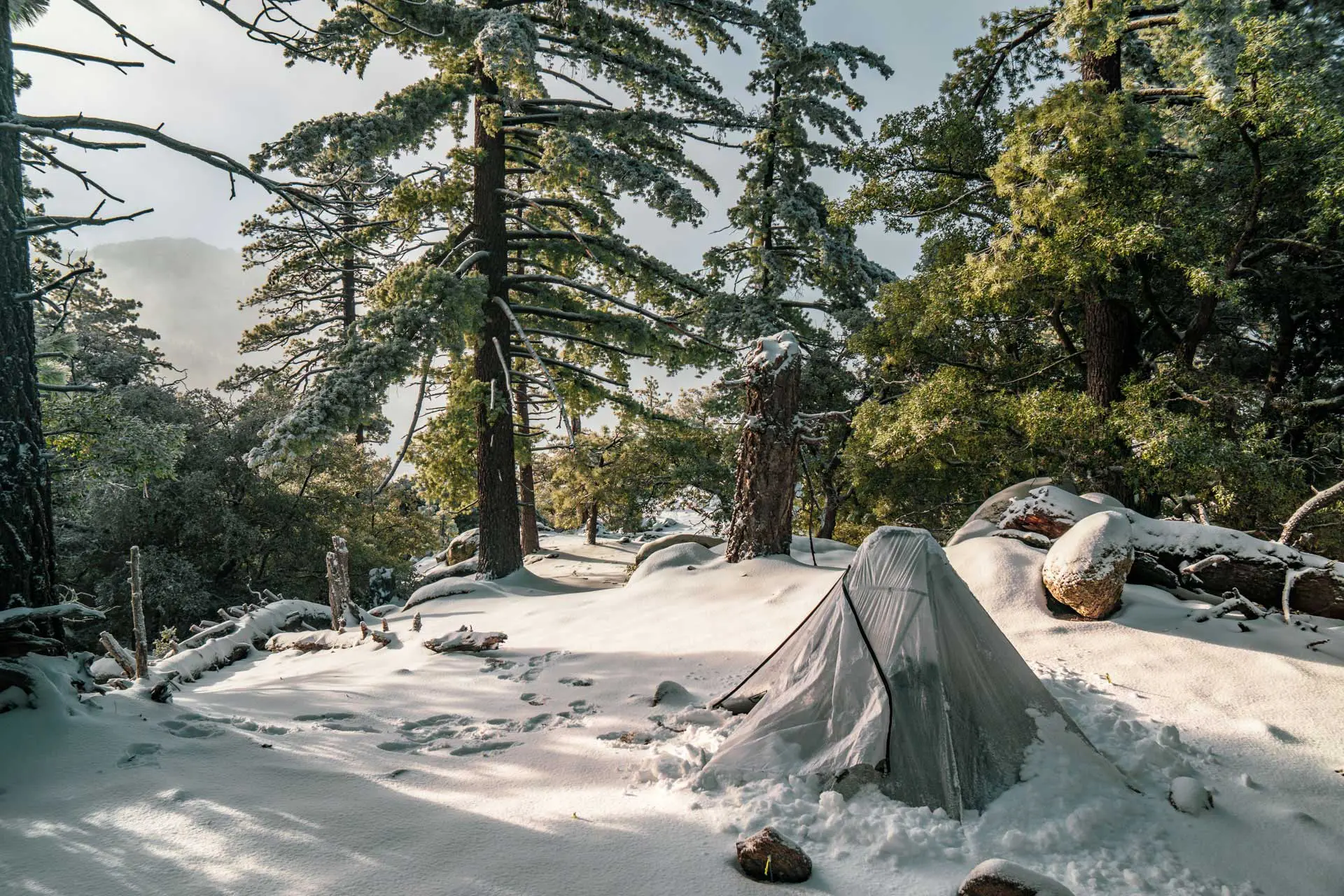
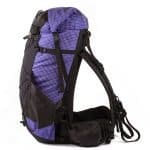

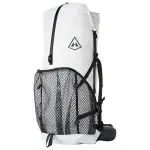


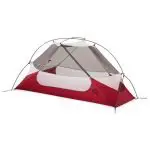
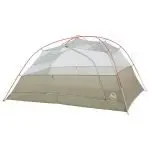

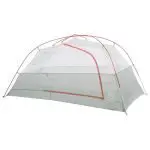
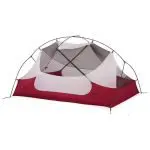

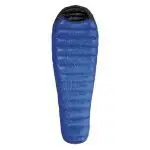

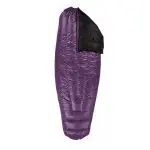
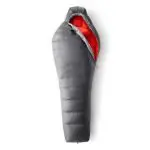

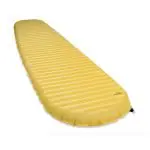

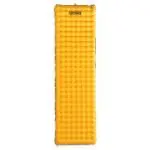

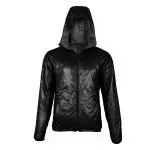
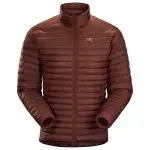

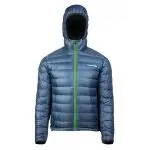











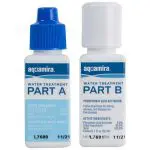
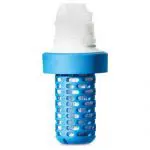
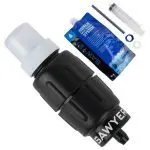

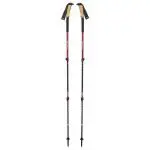
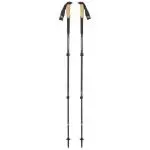
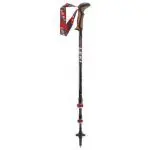



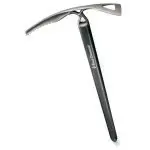
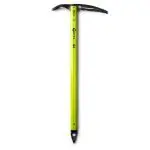
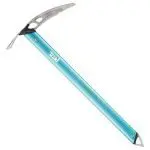
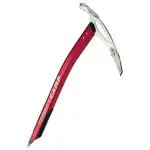
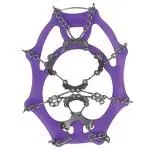
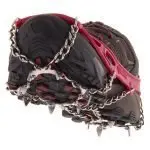
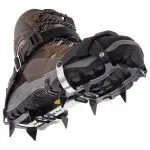



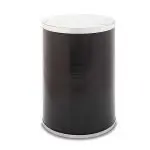

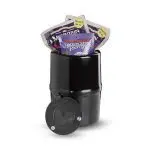
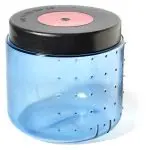
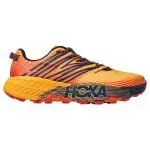
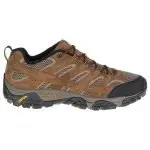
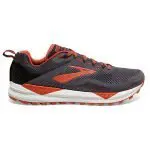









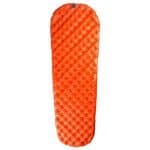

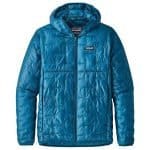


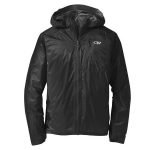
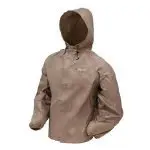



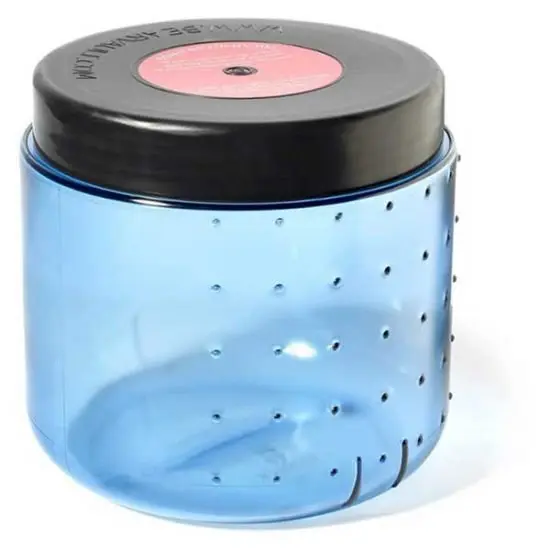
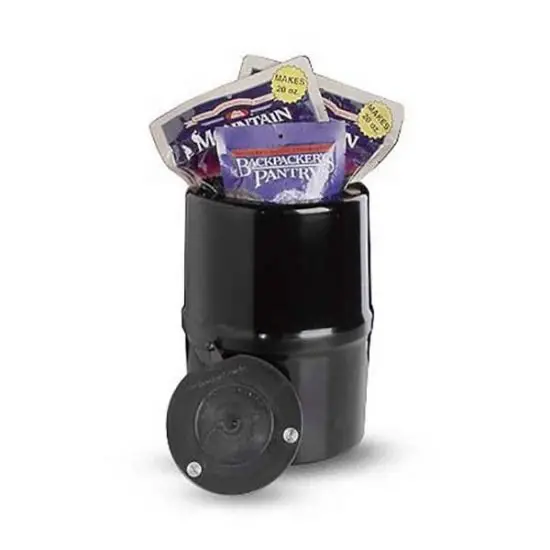
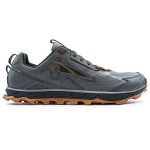





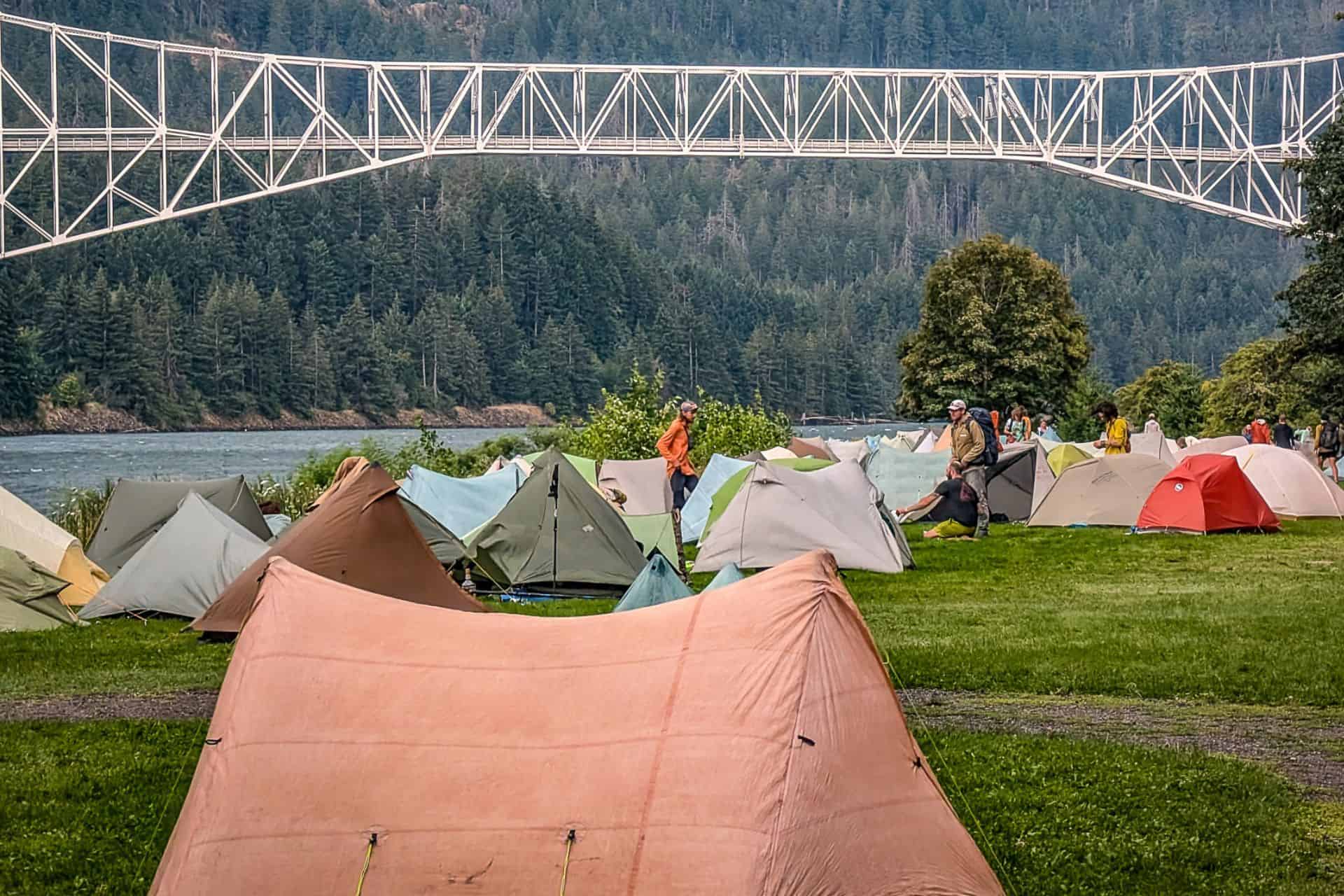

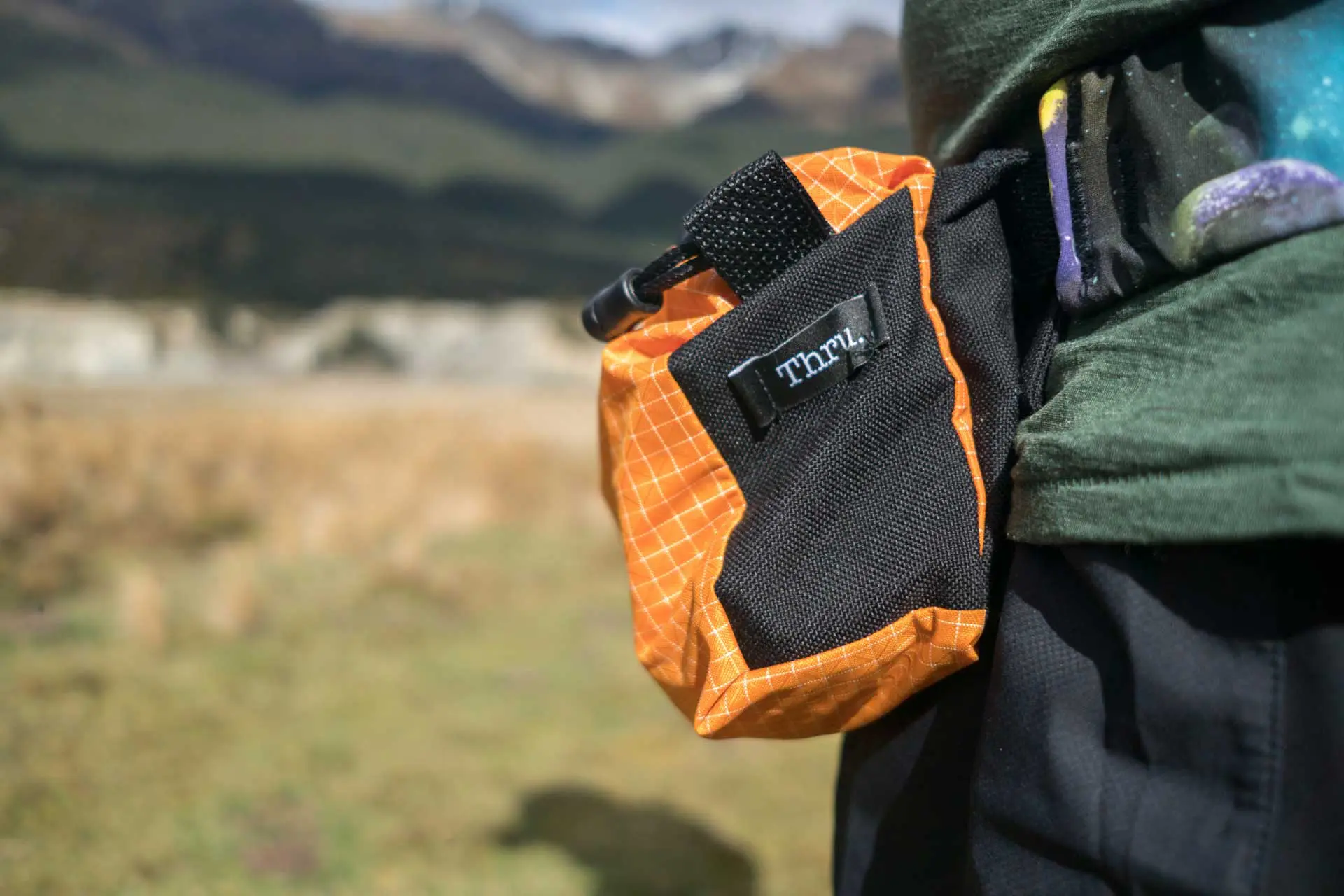



Hi Mac
Do you have data about the most convenient and light shoes to cross rivers?
Honestly, the best way to cross rivers is to just keep your shoes on. I don’t have any specific data as to what hikers did.
Do you have gear recommendations for gear that is cross trail compatible? I am planning on hiking the Pacific Crest Trail within 1 to 2 years. Within another 1 to 2 years after that, I hope to hike the 1,700 mile trail through South America that goes through the 17 national parks in Chile. What pieces can I use for both trails? What pieces might I need to change which might be trail specific?
Depending on the season you’re hiking, most of the gear could probably be used on both trails.
Hey, sorry if i missed it somewhere but is the gear compiled from data from finishers only? It’s hard to say whether the 1.5kg tent was favourite of finishers or all or non finishers ;)
The data used here is based on responses from all hikers.
Weird. I’ve only hiked on the AT. I really liked our Copper Spur but we switched to a Triplex this year and I’ve really liked it, especially when setting up in the rain.
Before, I gravitated to shelters. With the Triplex we are fine camping in bad weather.
I’m wondering about the difference now.
Also. I read gear lists and you list your favorite headlamps but I don’t see them listed or evaluated in the survey. I’d like to see that.
This is going to be added for next year (or possibly the year after in the event there is no next year).
Wondering what about the PCT affects things.
On the other hand I switched from a Levity to a Hyperlight pack from reading this blog.
The average hiker dropped about 2 pounds from their starting weight to their ending weight. I would like to know how they are dropping the weight. Are they just throwing out certain items, and/or, are they replacing some items with lighter items?
I used to ask what this ended up being and the answer, overwhelmingly, was always extra clothing.
While you are providing the numerical difference between items in each category, I question if there is any statistically significant difference in many of the ratings. Calculating statistical significance is not very difficult, and I would recommend you do so. If multiple items are not statistically different, then one should purchase the cheapest and lightest.
I will take this into account for next year!
Hi Mac, love all this data. Gets my nerd on. Are you planning to publish all the gear that did not make it to the most used/favorite? Like a total overview of everything for us to dive in?
Cheers!
Publishing all the gear responses wasn’t really in the cards, but maybe I’ll follow up with everything that was present on the trail (in a slightly less detailed post).
Having only used My Zpacks Arc Haul 1,200 miles and never carrying over 33 pounds (and usually less than 29) I found it both comfortable and durable but I did have some issues with the arch feature going to one side which I solved with a few feet of twine that cost literally nothing. I also sent my fix/hack into Zpacks in case anyone else has the same issue. I did test at home the ability of it carrying a BV500 bear canister and it’s a little bit too small a of a pack to carry it comfortably I think. I may have to slip a sit pad in between my back and the pack while carrying the canister or else carry it on top of the outside and leave it empty while hiking or it will be too top heavy. I think I will test it again with the BV450
Having to fix something that’s meant to be a feature of the pack doesn’t sound ideal.
True, it’s not *ideal* but it’s better than buying a pack that weighs almost twice as much. It also may have been caused by me sleeping on top of the pack every night. I actually met a hiker in North Cal that was half way throu the PCT that did not even know how to make his pack arch and when I showed him how he said: Wow! that’s much more comfortable.
Not a big deal but if I’m remembering right the neoair xlite has an r-value of 3.2 not 4.2!
Also I’d love to see a question about sleeping bag temperature ratings! In Europe there’s EN ratings but none of the cottage companies use standardized ratings, which makes things confusing. I was given a formula to estimate confort temperature based on fill power and weight of down, and based on that (and personal experience in the shoulder season) I got pretty cold before 20° in my 0° Enlightened Equipment quilt (with all my clothes and a puffy and the women’s neoair xlite + a 0.7 r-value foam mat). So a question about sleeping bags (what is the given temperature rating vs at what temperature you would start to get cold (and with what pad/r-value)) would be super useful! That way we could also compare the ratings people give to cottage company bags vs bags that have EN/ISO ratings.
It sorta depends on your tent as well. I took a thermometer with me as a test and on a calm night when it was 27F outside it was 38 inside my tent but on a windy night it was the same temperature inside and out and. I was warm at 38 degrees inside but froze all night in a 45 degree heavy wind with a 32 degree bag. I also found that when it’s calm I’m warmer wearing fewer clothes inside my bag. I have not had two night in a row with the same wind and temps to test this in windy conditions but I surmise that more insulation OUTSIDE your bag is better than more clothes on.
According to the Therm-a-Rest website, the XLite has a 4.2 R-value. The pads were recently updated (with a new valve as well), so this could be why your memory is different.
I like your feedback on the sleeping bags. My concern is that I don’t believe asking people “what temperature you would start to get cold” would yield very accurate responses.
Oh wow, I just looked up the update -it must be super new, it’s not even available on the European website yet, and the women’s version gains 1.5 in r-value, which makes it practically a 4 season pad. I should have waited another year to upgrade to it!
Maybe a more useful version of that question would be to ask people how accurate they feel the temperature ratings are, and by how many degrees (+ or -) they feel it’s off? I also don’t feel like people are very accurate at judging temperatures, and then often don’t account for other factors (the pad, mostly, but wind and fatigue etc), but by at asking the question that way they might be more inclined to consider personal variables. Also, at least by aggregating the answers, you might find that certain brands are on average reported to run, say, 5° lower while others might be reported to run 20° lower? Which might not reflect accurately on the bag per say but would give a very general benchmark for comparing brands? Like all the reviews I’ve read on Western Mountaineering bags say that the ratings are accurate while many reviews I’ve read of Zpacks say to aim for 10 to 20° lower than the expected temps, and I haven’t seen all that many reviews of EN/ISO rated bags that complain about inaccurate ratings, so… I’m just very curious!
As i understand there is a new r rating system in place that now gives a lot of pads a warmer r rating while not actually being warmer.
I’ve seen a lot of asking online for the lightest / smallest ice axe from people that have never used them and are looking to go with the option that will hurt their backs the least. If you have a section specifically for ice axes I think it would be worth adding that they do have to be sized to you correctly if you want them to do anything in the event of a fall. Otherwise you might as well just leave it behind.
Not necessarily . . . there are a number of YouTube videos on how to use ice axes and explain the sizing that depends on what type of activity you are doing. Just hiking the PCT is less critical of size then mountaineering or other activities since you are not normally climbing the face of a glacier etc on the PCT but only using it for self arresting (for most hikers)
> only using it for self arresting (for most hikers)
This is kind of my point though. I see people online asking about ice tools used for climbing Water Ice instead of Ice Axes used for Self Arresting since the Ice Tools are smaller. Or they go with the 50cm Petzl Axe because it’s the smallest when they’re 6’3″ and need a 75cm axe. To me it just feels like worth noting that it’s a particular piece of gear where the lightest options isn’t always the right option.
Very interesting to see the differences between the favorites list and most commonly used list. I read the favorites and thought but where are all the common stuff I see. I think you should have reversed order between the two lists so favorites and least favorites followed. Anyway my two cents. Otherwise as usual very valuable info. Thanks for your work!
Thanks for the feedback, BeeKeeper!
Love the idea of documenting what an item that was not working was swapped for what gear that did work. (did I say the right?) :o)
I think you got it right. The only thing is that when you get that specific, there’s no real continuity in answers and they all just become matters of personal opinion.
Wow, I just bought my first pair of Altra shoes – sounds like many people didn’t like them. I bought the Lone Peaks after hiking with someone else who had a pair. I only go out for 5 days at a time so not hundreds of miles so maybe I’ll be okay. We’ll see.
Thanks for this list and your website – I enjoy following your hikes on your Instgram page.
Shoes are the single most difficult item to generalise about. Try a few pairs and see what works for you.
Lots of seasoned thru-hikers have recommended Altras, and some hate them. I love the Lone Peak 4, but do not like the insole.
Thanks for the info, Steve. I have a pair of Keens just for wearing around but I can’t imagine hiking in them – they aren’t as comfortable as the Altras. I used to have a pair of leather Sundowners but switched to Adidas Terrex to get away from leather. The Adidas gave me blisters so I decided to give the Altras a try. Looking forward to using them.
First thing I do is swap the insole out for a Sof Sole FIT Series High Arch Insole that’s two sizes larger than my feet and cut the length down to fit using the factory insole as a template. This way I do not feel the arch support. If I get them in my foot size the arch support bothers me. They have lasted me 1200 miles so far. They make great rock guards as well.
Different shoes work for different people. Personally, Altras aren’t wide enough for me (until I go up two sizes and they turn into clown shoes). I’ve been wearing a heavier paris of Merrell Moab 2 Vents for years and I love them. That said, I’ve met plenty of people who hate them.
Mac, thanks for your reply – love your website and info!
I may have to give theMerrell another try some day, Ive had two pair of them over the years and started out liking them but they became uncomfortable but I’m now thinking that it’s because I was buying them borderline too small and then my feet would grow from hiking so much. I’m now wearing Altra Lone Peak a size larger than my foot size and love them. What I love the most about them is how fast they dry after walking through water in them. When you are done crossing they don’t hold any water – there’s nothing in them to pour out so you just put your socks back on and keep hiking with relatively dry feet.
Seeing the Moab 2’s was the most surprising part of the survey for me. In a lot of other places, I’ve seen people scoff at traditional hiking shoes, but your survey proves people like them a lot. Definitely keeping them on my radar for future purchases.
Remember that’s a handful of complaints vs the 800+ responses to the survey. All feet aren’t the same. I’ve been happily wearing Altra Lone Peaks over thousands and thousands of miles the past 5ish years. I started wearing them at version 1.5. Yes they only last about 300 miles but my feet are my most valuable hiking part.
Thanks, Jan – good to keep things in perspective.
I feel like when super popular gear gets bad reviews, I’m cautious about those reviews – I wonder if a lot of less experienced hikers buy the popular thing, then have issues because that’s just part of figuring it out, and then blame the thing when it just didn’t suit them? I’m also wondering if the abundance of foot issues someone reported with Altras came from people prone to foot issues buying those shoes specifically to help (because that’s how they’re marketed), but then having issues anyways. Idk but i guess it just means people have to try things for themselves too?
I LOVE them after 1200 miles with two pair.
Good to know, thanks, John!
Altra LPs totally destroyed my Achilles tendons, and I did *everything* you’re supposed to do to ease into zero drop shoes. (I developed tendonitis very quickly, after more than a year of easing into zero drop and quite a bit of hiking and running in them.) I take offense at the suggestion in some comments (here and elsewhere) that it’s inexperience, pre-existing problems, or lack of transition time that is the cause of problems attributed to Altras. No, they actually just are not good for some people’s feet! I really wanted them to work, as the extra toe space helped a lot with preventing blisters and the traction is great, but I ended up having to go to a shoe with some drop for the sake of my Achilles. Toe socks helped me cope with a normal-ish toe box.
So, listen to your feet and don’t force it just because many people like them.
Altra LPs totally destroyed my Achilles tendons, and I did *everything* you’re supposed to do to ease into zero drop shoes. (I developed tendonitis very quickly, after more than a year of easing into zero drop and quite a bit of hiking and running in them.) I take offense at the suggestion in some comments (here and elsewhere) that it’s inexperience, pre-existing problems, or lack of transition time that is the cause of problems attributed to Altras. No, they actually just are not good for some people’s feet! I really wanted them to work, as the extra toe space helped a lot with preventing blisters and the traction is great, but I ended up having to go to a shoe with some drop for the sake of my Achilles. Toe socks helped me cope with a normal-ish toe box.
So, listen to your feet and don’t force it just because many people like them.
Holy shit. Zpacks just getting the final blow after their CS fiasco.
Thanks for your work! Your blog has been an awesome resource in preparing my thru hike next year <3
You’re welcome! I guess I missed this CS fiasco – care to fill me in?
I’d love to hear more about the fiasco as well.
Mark me up as another Altra user who ended up in rehab over knee problems from them. My wife got serious tendinitis and she is hyper flexible.
Been happy with alternatives.
Really appreciate all the data.
I think he means they are just SLOW at Customer Service. They are not a “cottage” industry any more and cannot do custom work because the sewing is sub’ed out so you cannot get a custom stuff sack or custom straps on your pack etc. They do good repairs but it takes time . . . with mailing back and forth it can take two to three weeks. But I’m happy because I had time and they did not charge and they paid for shipping both ways. And when I sent my tent in they fixed things that were not warranty issues but just excessive wear due to high wind damage.
Was anyone else surprised the duplex/triplex weren’t in the highest rated? The YouTube influencers rave about them. For someone looking for a big 2p option the 22oz 90×60 triplex is impossible to ignore. Wondering if zpacks cs and packs reviews brought down the shelters with them.
You can’t trust the YouTube.
People get a weird look on their face when I tell them I spend only $45 for my ASICS Gel-Venture trail runners. These shoes are my reward for finally learning that my feet do not overpronate and therefore don’t need arch support.
#knowyourfeet